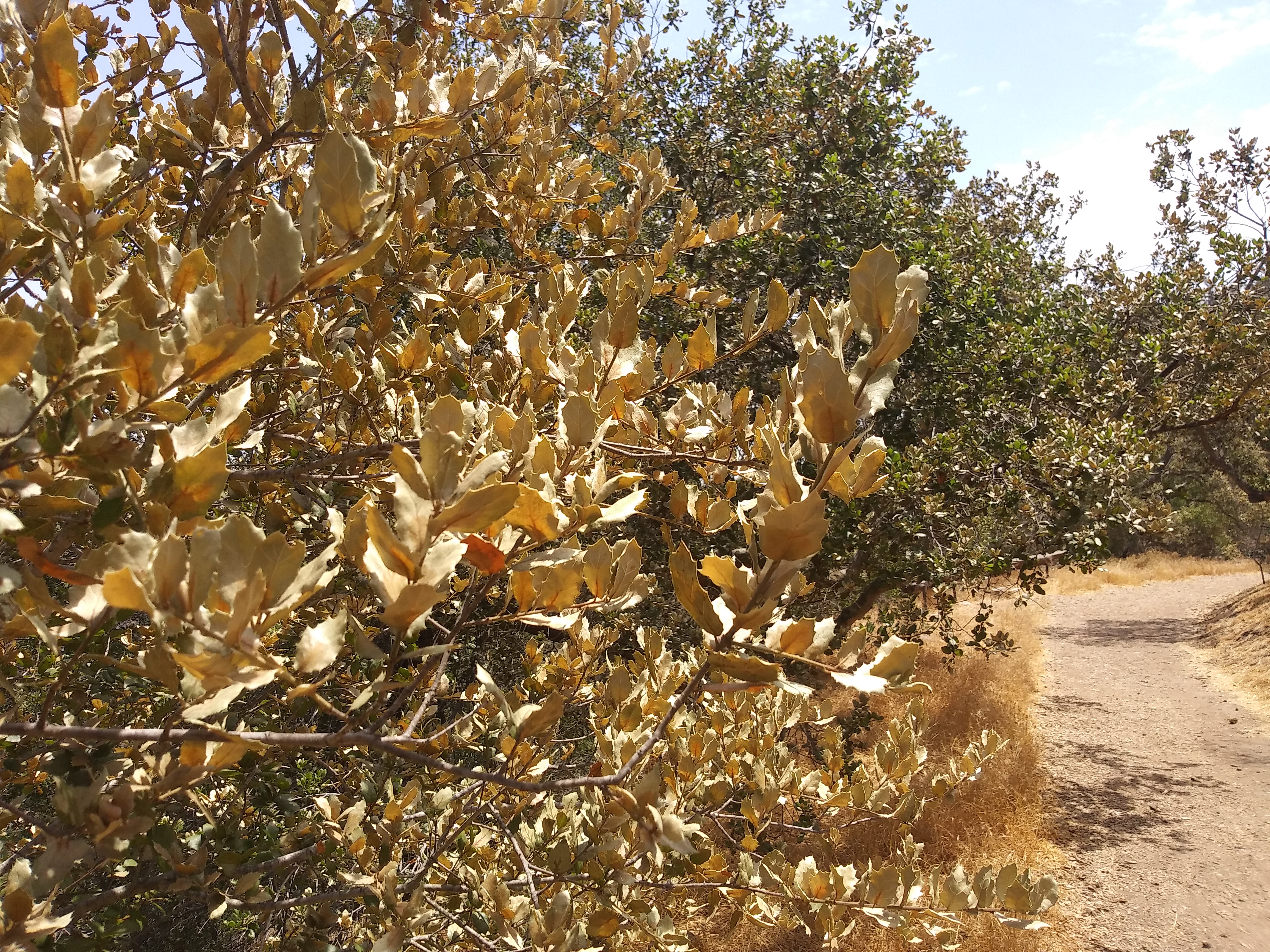Driving around LA you may have noticed trees and plants all over town with entire areas across their canopy covered with dried, brown leaves. This sunburned effect can be caused by a combination of the angle of the sun and extreme heat, burning some, but not all the leaves.
This unusual combination occurred when record-breaking temperatures over the course of two days – July 6 and 7 – hit 108° in the downtown area, and rose to 117° in the valley. This at a time when trees and plants in our landscape are already suffering deeply after years of drought, and ever-rising temperatures.
“Our headquarters at Coldwater Canyon Park was particularly hit hard” shared Jim Hardie, TreePeople’s Director of Park Operations. “It is shocking the breadth of the effect here in our park in just 24 hours. Many of our trees were scorched at the top and should come back. However, smaller trees have died in some of the outer areas of the park where we do not irrigate.”

Most trees will survive but here are a few things you can do to give your trees and plants some love:
1. Don’t remove the scorched leaves
If you have scorched leaves on your trees and plants, allow them to fall off on their own. They are protecting the leaves underneath. Also, do not prune out the branches as this will stimulate new growth during the hottest time of the year.
2. Deep water your trees
Trees need deep watering, especially before heat waves hit. Deep watering is especially helpful when we don’t get rain during the Winter/Spring months when we normally should. This helps to ensure our trees can endure the hot weather.
Check out this infographic for specific instructions on how to keep trees alive.
3. Consider planting the right tree for the right climate zone
Different trees have different responses to extreme heat and to drought (lack of water). Depending on where you live should help determine the types of trees to plant in your area.
For example, at our headquarters that is located on the Valley side of the Santa Monica Mountains, our Valley oaks (Quercus lobata) were not as affected by the extreme heat event as our Coast live oaks (Quercus agrifolia). As their name suggests, one is more appropriate to the temperatures and water needs of the hot interior valley areas of Los Angeles, and the other to the coastal areas.
Know your climate zone when choosing trees to plant and it may help to ensure they can survive the extreme heat in the future.
When considering how to protect yourself during times of extreme heat and direct sunlight, don’t forget the trees! Remember, trees are a necessary component to the well-being of our communities as they keep us cool by shading our neighborhoods, add needed moisture to the air, and bring joy through their beauty.
Want more tips on how to keep your trees cool all summer? Head over to our DIY Center webpage!

